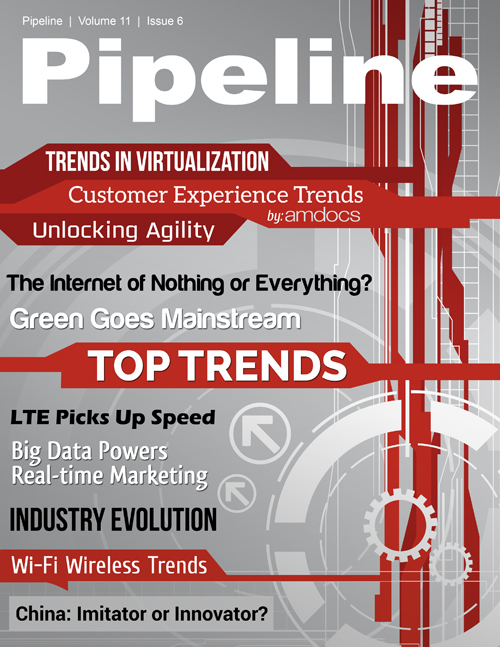The Evolution of the Integrated Communications & Entertainment Technology Marketplace
The service landscape has completely transformed, from basic voice and texting to real-time video chatting, social networking, global social mobile gaming, streaming video, and more. With click-to-cloud applications, photo and video sharing and all types of mobile collaboration, users are increasingly adding to the upstream pipe, which wasn’t necessarily anticipated by traditional network planning. Nokia Networks estimates that the average user will consume one gigabyte of mobile data every day by 2020; according to a representative, the network must support a 1,000x increase in traffic to accommodate the service needs of the future, and that it must be designed to “reduce latency to one millisecond for higher degrees of interactivity". Hitting those kinds of numbers will require a new way of looking at the network, not to mention completely new management solutions.
Along with the development of advanced connectivity solutions, the number and variety of customers have grown. Verizon’s director of network and technology, Praveen Atreya, listed some of the verticals the CSP works in today, including healthcare, media, consumer, retail, public safety, utility, education, and enterprise.
Likewise, billing is more intricate than it once was. In its list of strategic predictions for 2013, Gartner wrote that “enterprises must manage multiple stores, payment processes, and licensing terms", and that the personal cloud will soon replace the PC as the hub of the digital universe. As CSPs move into M2M and personal cloud, negotiate deals for global cellular and Wi-Fi roaming, build partnerships with numerous content providers, and become brokers of cloud services, the number of moving pieces in the world of billing will increase exponentially.
Just like the hunger for faster, sexier devices, the product and service life cycle has dramatically accelerated: CSPs can’t wait weeks for new services to be cataloged, provisioned, launched, billed for, and supported. The stunning success of OTT applications proves that time is of the essence in the new digital economy, requiring unprecedented speed and agility on the front and back end as well as information sharing across multiple functional groups.
It’s hard to imagine that in the not-so-distant past the competitive story in telecom centered on a “long-distance war", because today the world’s largest voice-service provider is Skype, an OTT application, and mobile operators are offering voice for free. Of course, multiple-system operators (MSOs) such as Comcast and Time Warner Cable first turned up the heat with voice over IP (VoIP) service, and now companies like Apple, Amazon, Google and WhatsApp have emerged as serious over-the-top competitors, making the sea of OTT applications that sap traditional revenue seem endless. Creating and executing a strategy that can challenge these opponents is a taller order than ever before.





















